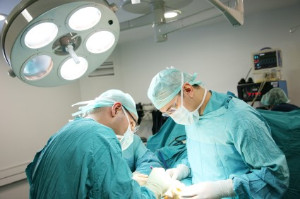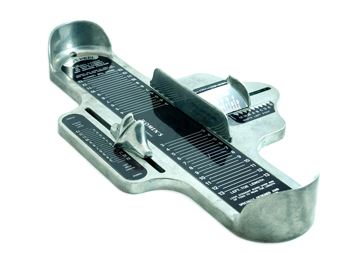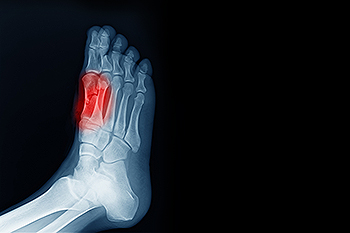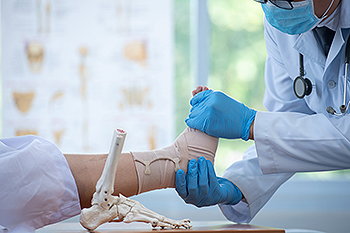Items filtered by date: September 2023
What You Should Know About Foot Surgery

Foot surgery is a significant medical decision that can bring relief and improved quality of life to those suffering from various foot conditions. However, there are several important facts to consider before opting for foot surgery. Firstly, foot surgery is typically recommended when conservative treatments such as rest, physical therapy, or medication have not provided relief. It is essential to exhaust all non-surgical options and consult with a podiatrist or to determine the most suitable course of action. Secondly, the type of foot surgery required depends on the specific condition being addressed. Common foot surgeries include bunionectomy, plantar fascia release, hammertoe correction, and ankle fusion. Recovery from foot surgery varies, but it often involves a period of restricted weight-bearing and wound care, and regaining strength and mobility. Lastly, the success of foot surgery depends on various factors, including the individual's overall health, adherence to post-operative instructions, and the skill of the surgeon. While foot surgery can be extremely effective, it is crucial to have realistic expectations and a thorough understanding of the procedure and recovery process. In conclusion, foot surgery is a valuable medical option for those suffering from debilitating foot conditions. With this being said, it should be approached with careful consideration, thorough research, and consultation with a trusted podiatrist to ensure the best possible outcome. If you are considering foot surgery, it is strongly suggested that you consult this type of healthcare professional who can determine if this is the right choice for you.
Foot surgery is sometimes necessary to treat a foot ailment. To learn more, contact Leonora Fihman, DPM of California. Our doctor will assist you with all of your foot and ankle needs.
When Is Surgery Necessary?
Foot and ankle surgery is generally reserved for cases in which less invasive, conservative procedures have failed to alleviate the problem. Some of the cases in which surgery may be necessary include:
- Removing foot deformities like bunions and bone spurs
- Severe arthritis that has caused bone issues
- Cosmetic reconstruction
What Types of Surgery Are There?
The type of surgery you receive will depend on the nature of the problem you have. Some of the possible surgeries include:
- Bunionectomy for painful bunions
- Surgical fusion for realignment of bones
- Neuropathy decompression surgery to treat nerve damage
Benefits of Surgery
Although surgery is usually a last resort, it can provide more complete pain relief compared to non-surgical methods and may allow you to finally resume full activity.
Surgical techniques have also become increasingly sophisticated. Techniques like endoscopic surgery allow for smaller incisions and faster recovery times.
If you have any questions please feel free to contact our offices located in Encino and Brentwood, Los Angeles, CA . We offer the newest diagnostic and treatment technologies for all your foot and ankle needs.
Foot Comfort and Shoe Size

When it comes to foot comfort, wearing the right shoe size is crucial. Many people unknowingly wear the wrong size, which can lead to foot pain and various conditions. Determining your proper shoe size is essential for getting the best support and comfort for your feet, whether you are shopping for running shoes, athletic shoes, or everyday footwear. To measure your shoe size, you can place your bare foot on a piece of paper, trace its outline, mark the longest and widest points, and measure both length and width. You should add about half an inch to the length measurement to find your ideal shoe size. If you are in between sizes, going up a size is recommended for added comfort. Regularly measuring your feet is advisable as they can change over time. If you have further questions about how to find the right size shoes for your feet, it is suggested that you make an appointment with a podiatrist who can provide you with additional tips.
Getting the right shoe size is an important part of proper foot health. Seek the assistance of Leonora Fihman, DPM from California. Our doctor will provide the care you need to keep you pain-free and on your feet.
Getting the Right Shoe Size
There are many people who wear shoes that are the incorrect size, negatively affecting their feet and posture. Selecting the right shoes is not a difficult process, so long as you keep several things in mind when it comes to choosing the right pair.
- When visiting the shoe store, use the tools available to measure your foot.
- Be sure there is ‘wiggle room’. There should be about an inch between your toes and the tip of your shoes.
- Do not always assume you are the same size, as manufacturers run differently.
- Purchase shoes later in the day, as your feet swell as the day progresses.
- If a shoe is not comfortable, it is not suitable. Most shoes can’t be ‘broken in’, and comfort should be the ultimate goal when it comes to choosing the right pair of shoes
As our feet hold our body weight and keep us moving, it is important to treat them right. Picking the right pair of shoes can provide your feet comfort and mobility without pain.
If you have any questions, please feel free to contact our offices located in Encino and Brentwood, Los Angeles, CA . We offer the newest diagnostic and treatment technologies for all your foot care needs.
Causes and Treatment of Sesamoiditis

Sesamoiditis is a condition that affects a pair of tiny bones called the sesamoids, found within the tendons beneath the base of the big toe. These bones act as natural shock absorbers, supporting the foot's weight-bearing function. When these bones become inflamed due to excessive pressure, overuse, or trauma, it results in sesamoiditis. The most common cause of sesamoiditis is repetitive stress on the foot, often associated with activities that can include dancing, running, or wearing high heels. Treatment for sesamoiditis typically involves rest and elevation to reduce inflammation. Wearing cushioned footwear and orthotics can alleviate pressure on the sesamoids. In severe cases, a podiatrist may recommend immobilization or corticosteroid injections. Surgery is rarely necessary but may be considered in extreme cases where conservative treatments are ineffective. Early diagnosis and intervention are essential to manage sesamoiditis and prevent chronic pain and complications. If you have developed sesamoiditis, it is strongly suggested that you visit a podiatrist who can effectively treat this condition.
Sesamoiditis is an unpleasant foot condition characterized by pain in the balls of the feet. If you think you’re struggling with sesamoiditis, contact Leonora Fihman, DPM of California. Our doctor will treat your condition thoroughly and effectively.
Sesamoiditis
Sesamoiditis is a condition of the foot that affects the ball of the foot. It is more common in younger people than it is in older people. It can also occur with people who have begun a new exercise program, since their bodies are adjusting to the new physical regimen. Pain may also be caused by the inflammation of tendons surrounding the bones. It is important to seek treatment in its early stages because if you ignore the pain, this condition can lead to more serious problems such as severe irritation and bone fractures.
Causes of Sesamoiditis
- Sudden increase in activity
- Increase in physically strenuous movement without a proper warm up or build up
- Foot structure: those who have smaller, bonier feet or those with a high arch may be more susceptible
Treatment for sesamoiditis is non-invasive and simple. Doctors may recommend a strict rest period where the patient forgoes most physical activity. This will help give the patient time to heal their feet through limited activity. For serious cases, it is best to speak with your doctor to determine a treatment option that will help your specific needs.
If you have any questions please feel free to contact our offices located in Encino and Brentwood, Los Angeles, CA . We offer the newest diagnostic and treatment technologies for all your foot and ankle needs.
Understanding Treatments and Recovery for a Broken Foot

A broken foot, though distressing, is a condition that can be managed effectively with the right approach to treatment and healing. A broken foot refers to a fracture in any of the 26 bones that make up this intricate structure. This can range from a hairline crack to a more severe break which can affect multiple bones. Treatment depends on the severity and location of the fracture. Minor breaks may only require rest, elevation, and immobilization through a cast or splint. More complex fractures may demand surgical intervention to realign the bones. Appropriate healing time will vary based on the nature of the break and the individual's overall health. Patience is important, as bones gradually mend over several weeks to months. Adhering to medical advice and taking adequate precautions ensures a smoother recovery journey for those healing from a broken foot. If you have broken your foot, it is suggested that you contact a podiatrist who can effectively diagnose and offer the treatment method that is right for you.
A broken foot requires immediate medical attention and treatment. If you need your feet checked, contact Leonora Fihman, DPM from California. Our doctor can provide the care you need to keep you pain-free and on your feet.
Broken Foot Causes, Symptoms, and Treatment
A broken foot is caused by one of the bones in the foot typically breaking when bended, crushed, or stretched beyond its natural capabilities. Usually the location of the fracture indicates how the break occurred, whether it was through an object, fall, or any other type of injury.
Common Symptoms of Broken Feet:
- Bruising
- Pain
- Redness
- Swelling
- Blue in color
- Numbness
- Cold
- Misshapen
- Cuts
- Deformities
Those that suspect they have a broken foot shoot seek urgent medical attention where a medical professional could diagnose the severity.
Treatment for broken bones varies depending on the cause, severity and location. Some will require the use of splints, casts or crutches while others could even involve surgery to repair the broken bones. Personal care includes the use of ice and keeping the foot stabilized and elevated.
If you have any questions please feel free to contact our offices located in Encino and Brentwood, Los Angeles, CA . We offer the newest diagnostic and treatment technologies for all your foot and ankle needs.

